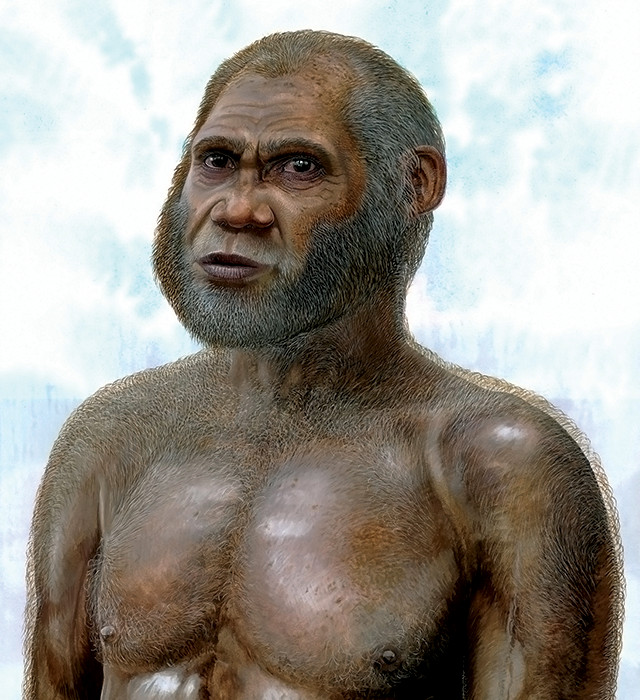
by Mary Caperton Morton Monday, April 18, 2016

Artist's reconstruction of a Red Deer Cave man. Credit: Peter Schouten.
In the 1980s, a collection of bones from very small hominids was excavated from a cave in southwestern China, alongside a number of bones from a species of large red deer. Nicknamed the “Red Deer Cave people,” but not yet declared a distinct species, researchers previously dated radiocarbon in the sediments where the bones were found to about 14,000 years ago. In a new comparative study, the same team has now found that the hominids from which the bones came appear to have been similar to — although far smaller than — Homo habilis and Homo erectus, suggesting it could indeed be a new species.
Aside from these bones, the most recent pre-modern humans in mainland Eurasia are the Neanderthals and the Denisovans of Siberia, which both died out roughly 40,000 years ago, around the time when modern humans were populating the Eurasian continent. “The new find hints at the possibility that a pre-modern species may have overlapped in time with modern humans on mainland East Asia, but the case needs to be built up slowly with more bone discoveries,” said anthropologist and lead author Darren Curnoe of the University of New South Wales in Australia, in a statement.
In the new study, published in PLOS ONE, Curnoe’s team focused on a partial femur recovered from the Chinese cave, which had gone unstudied in a museum drawer since its discovery in 1989. The head, neck and shaft of the femur bear a strong resemblance to fossils identified as Homo habilis and early Homo erectus, species that lived in Africa more than 1.5 million years ago, the team reported. The small size of the Red Deer femur indicates it belonged to an individual weighing about 45 kilograms. Previous studies have characterized skull fragments from the cave and found them to be primitive in both size and shape.
The results lend support to the idea that the rugged landscape of the Tibetan Plateau, in what is now China, may have provided a refuge for this small hominid to survive much longer than other primitive species of Homo, the team wrote.
© 2008-2021. All rights reserved. Any copying, redistribution or retransmission of any of the contents of this service without the expressed written permission of the American Geosciences Institute is expressly prohibited. Click here for all copyright requests.